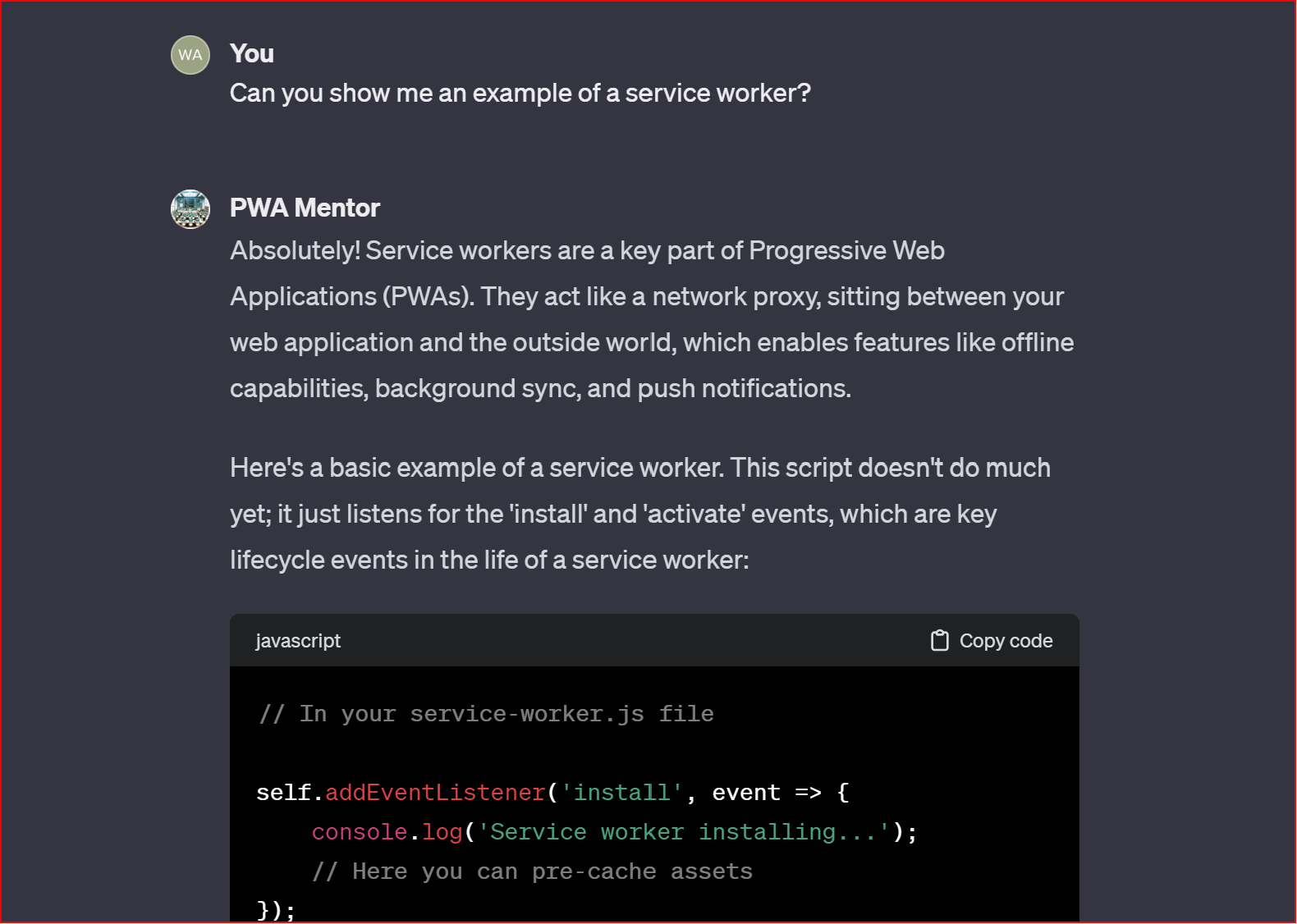I recently went through the process of converting this blog into a progressive web application, which you can read about here, and while it wasn't overly complex it definitely took a bit of trial and error in order to get everything setup correctly and optimized. PWA's have their own life cycles, vocabulary and optimizations that need to be configured in order to get them up and running.
Check out my PWA Mentor GPT.
And if you have no idea what a Progressive Web Application, here is a brief overview.
What is a PWA
A PWA is a web application that uses modern web technologies and best practices to deliver a reliable, fast, and engaging experience to users. It can be accessed through a web browser like a regular website but offers features typically associated with native mobile apps.
Key features of a PWA
Offline Access: PWAs can work offline or in low network conditions, thanks to service workers that cache essential assets and data. This ensures users can still use the app even when they're not connected to the internet.
Responsive Design: PWAs are built with responsive design principles, ensuring that they adapt and look great on various devices and screen sizes, including smartphones, tablets, and desktops.
App-Like Experience: PWAs provide an app-like user experience, with smooth animations, gestures, and navigation, making them feel like native mobile apps.
Installation and Home Screen Access: Users can "install" PWAs on their devices' home screens or app drawers, just like native apps, without the need for app store downloads. This allows for easy access and quick loading.
Push Notifications: PWAs can send push notifications to users' devices, keeping them engaged and informed about updates, promotions, or important information, even when the app is not open.
Essentially, they make your websites behave more like native applications and they can improve performance depending on how you configure your caching. Pretty cool.
I'll say now that a blog isn't your typical use case when it comes to setting up a progressive web app, but because this does act as my personal sandbox I try and incorporate as many web related features and technologies as I can into the mix.
My Custom GPT
With the recent release of the GPT Store, I decided to create a custom GPT that will walk you through the process of converting your own web applications into PWA's, because I did initially use ChatGPT in order to walk me through the process.

ChatGPT
I specifically configured this model to answer the questions that I personally had when I was implementing it as a total beginner in PWA's, because it didn't exactly go as smoothly as I initially thought.
The default chat that I initiated to learn how to set up a PWA was filled with terminology and best practices, but not so much on the actual implementation, such as service workers and caching logic.
This model specifically focuses on practical application over theory as I think that most programmer's learn best by just typing out code and seeing it run.
I will be continuously updating the model going forward with the hopes that it can be the quickest and most efficient way for a total beginner to get started with Progressive Web Applications.
Walter Guevara is a software engineer, startup founder and currently teaches programming for a coding bootcamp. He is currently building things that don't yet exist.
Stay up to date
Sign up for my FREE newsletter. Get informed of the latest happenings in the programming world.